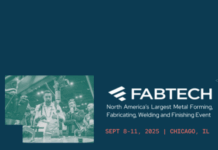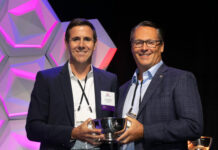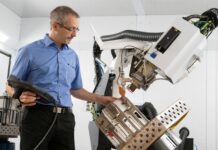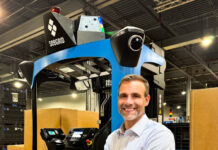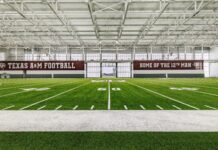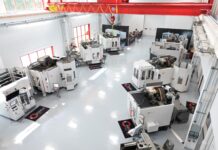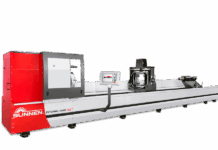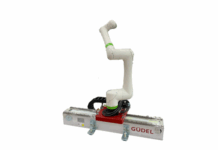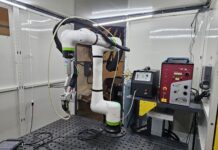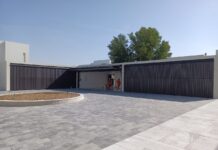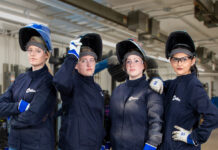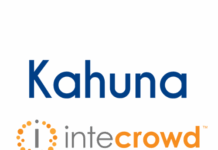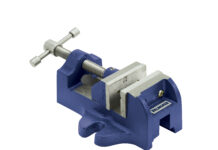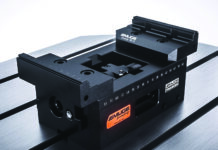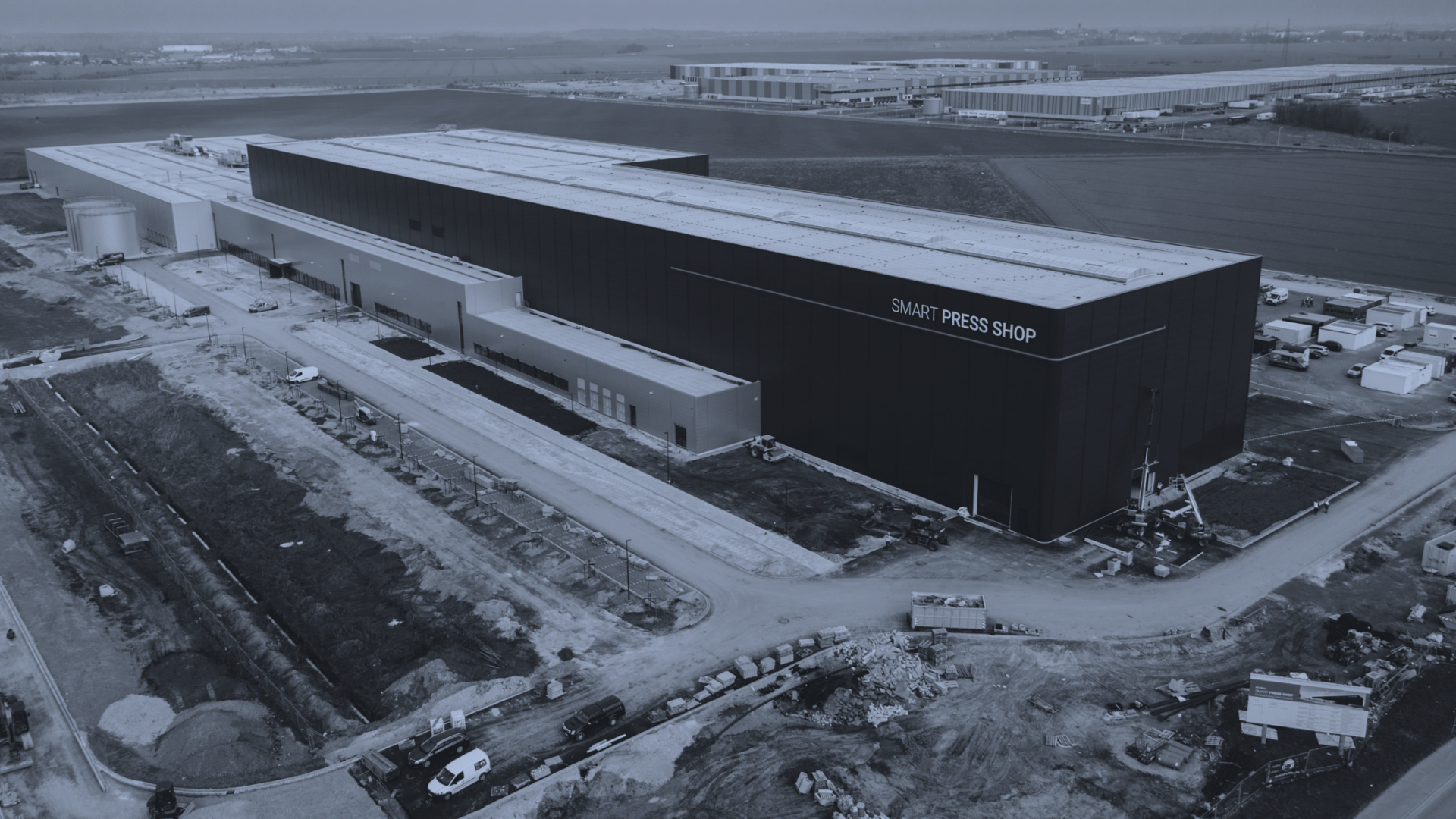
The mark of a leader is making bold, directionally correct statements that define industry transforming goals – then delivering on those goals. From now on, we can designate Schuler as a Digital Leader. They have delivered on their 2018 commitment with Porsche to create not just a joint venture for car parts, but a Smart Press Shop – which has completely leveraged and incorporated Industry 4.0 capabilities. Executives from Schuler talked in Michigan about this Press Shop of the Future earlier this year, coined Forming Technology 4.0. Participants and topic presenters in the Workshop-styled event were Dominico Iacovelli (CEO Schuler Group), Kevin MacAllister (President, Schuler North America), Tiago Vasconcellos (Sales Director, Schuler North America), Andreas Gebele (Product Manager Digital Automotive Solutions), Samuel Czyzewski (Service and Digitalization Engineer), Flavio Rudiger (Lead Digitalization Engineer, Schuler North America), Andy Osborn (Director of Modernizations, Schuler North America), Kim Spencer (Customer Service Manager, Schuler North America), and Rodrigo Branco (Engineering Group Lead, Schuler North America). Let’s take a look at a timeline that provides context and overview for this realization.
History of the Future
In 2018 the two companies issued a joint press release entitled Schuler and Porsche Establish Joint Venture For Car Body Parts. Specifically quoted from this press release in 2018, “The purpose of the joint venture between Schuler and Porsche is to build a Smart Press Shop. The intention is for the new, highly flexible press shop to produce complex body parts using pioneering technologies; the focus will be on aluminium outer skin panels, as well as the production of smaller batch sizes. ‘With this joint venture, Porsche is making important decisions regarding the sports car production of the future. We took the first step back in 2015 with the acquisition of the Porsche Werkzeugbau subsidiary, and the joint venture with Schuler AG represents a logical progression’, says Albrecht Reimold, Member of the Executive Board for Production and Logistics at Porsche AG. ‘The aim of this undertaking is to use future technologies and innovations to make processes more efficient. The significant interplay between design, development, body planning, tool manufacturing and production within the Porsche Group will have a considerable effect on the quality of our sports cars.’ ”
The 2018 release highlighted improved production efficiency, machine connectivity, and end-to-end process data acquisition, touting a press shop that set new standards. “Process expertise in the field of metal forming is subject to ongoing development through the end-to-end networking of production data and the use of machine learning, for example. Porsche and Schuler are setting new standards in areas including predictive maintenance and intelligent production control.” Together with a stated commitment to add 100 jobs with this new factory, the tone and direction for transformational capabilities was set.
In 2019 the formation of a reality was crystallized further with the selection of Halle an der Saale, Germany, as the location for their new joint press shop. Construction was slated to begin in 2019 and opening for production scheduled for 2021. Domenico Iacovelli, CEO of Schuler AG, explained: “Our main focus is the cooperation with Porsche – an important premium customer for us with very exacting standards. At the same time, however, we regard the joint construction and operation of the Smart Press Shop as a project which will enable us to raise production efficiency and the digitalization of important process steps in car manufacturing to a new level for forming technology. Ultimately, other customers of Schuler will also benefit from this project.”
In January of 2021, a press release indicated that the plant in Germany had received many of the members (machinery) of its initial production line. “The first major members of Smart Press Shop GmbH have arrived at the Star Park industrial area in Halle (Saxony-Anhalt). These are the components for a ServoLine 20, induction press and laser blanking line, which is to be put into operation in 2021 in the state-of-the-art press shop of the joint venture between Porsche and Schuler. In this newly emerging press shop, the body parts of the Porsche Macan II are pressed, followed by assembly at the body shop in the Porsche plant in Leipzig.
The press line with an output of up to 20 strokes per minute (for example 40 doors, 80 fenders) has numerous intelligent functions from the Industry 4.0 kit by Schuler.”
Then in August of 2021, Schuler took another huge step in their Digital Suite strategy by announcing a partnership with a cloud-based IoT company. In the press release, Schuler says, “German Edge Cloud (GEC), which specialises in edge and cloud systems, is cooperating with Schuler, a machine and plant building company. In this context, Schuler is offering a track-and-trace solution for press plants within the Digital Suite, based on technology from German Edge Cloud. The Schuler Digital Suite with the “track-and-trace application powered by GEC” is being used, among other things, in the Smart Press Shop, a joint venture between Schuler and Porsche.” The press release goes on to outline that the GEC solution would enable cloud integration with other OEMs on a global basis, as well as integrations to hybrid clouds such as the Schuler private cloud. This was one of the defining moments in the journey to the Industry 4.0 offerings found in the digital suite, in my opinion. Schuler not only created an IoT backplane, but it did so in a way that provided access to a massive set of trend and analytics data. Analysis of issues encountered during press shop production, or even during support of units, could eventually be referenced to a broader universe of information for trend analysis and decision support.
With a press release that was entitled Schuler Presents the Press Shop of the Future, which was in itself seemingly a bold comment, Schuler North America would unveil digitalization and modernization best practices with an industry workshop and grand opening of a new facility. The media event would serve as the grand opening of Schuler’s Michigan Ave Service Facility. The facility is 32,000 sq. ft. and is equipped with a 50-ton crane, in-house press pit for rebuilds and assembly, specialized equipment, and full-time field service and engineering support hub.
“The Digitalization Modernization Workshop is an opportunity to inform the market about Schuler’s Digital Suite solutions and how manufacturers can create a fully networked press shop. Concurrently, our new facility exemplifies Schuler’s capabilities to the local market,” explained Kevin McAllister, President of Schuler North America. “The Michigan Ave Service Facility enables reduced turnaround time for repairs, press rebuilds, and modernization projects. We created a convenient space for customer shipments, follow-ups, reviews, and buy-offs.”
Workshop Setup
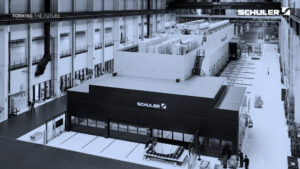 As the Workshop began in February, Schuler provided an overview of locations and capabilities. Schuler has over 300 employees in North America with a location in Querétaro, Mexico and one in Austin, TX., and four facilities in Michigan (two hydroforming capability locations in Canton, the Modernization and Service Center on display in Canton, and a spare parts location in Hastings). The Schuler digitalization message has traction, as Schuler identified an order footprint in the US across several industries, that included hydraulic presses, visual die protection (VDP), EHF technology for energy savings, robots for automated stacking, ServoLine Max press orders, and Digital Suite components, as well as Laser Blanking Line (LBL) items.
As the Workshop began in February, Schuler provided an overview of locations and capabilities. Schuler has over 300 employees in North America with a location in Querétaro, Mexico and one in Austin, TX., and four facilities in Michigan (two hydroforming capability locations in Canton, the Modernization and Service Center on display in Canton, and a spare parts location in Hastings). The Schuler digitalization message has traction, as Schuler identified an order footprint in the US across several industries, that included hydraulic presses, visual die protection (VDP), EHF technology for energy savings, robots for automated stacking, ServoLine Max press orders, and Digital Suite components, as well as Laser Blanking Line (LBL) items.
During the setup, Tiago Vasconcellos, from Schuler North America, recapped the genesis of the Smart Press Shop JV with Porsche. Of particular interest is that the Smart Press Shop is 1) optimized for small batch production, 2) focused on steel and aluminum materials, 3) driven with equipment parameters that are compatible with major OEMs, and 4) has sub-assembly capabilities. These are strategic intentions that mean the facility can do quick change overs in an automated fashion and evaluate production performance against industry wide baselines.
After the overview, the Workshop began with Schuler’s Digital Suite offering overview – with video examples of each of the offerings being tied back to the joint venture with Porsche. Real-world video examples of Industry 4.0 in action was the result! The offering overview communicated the intention well: target measurable improvements in Operating Equipment Efficiency, or OEE. Impact areas that would be measured in the Forming Technology 4.0 space (coined by Schuler) included performance impacts, quality impacts, and high availability impacts. Specific key performance indicators were assessed for each area. Performance impacts are measured through Schuler’s Performance Monitor and DigiSim capabilities. Quality impacts are measured through their Visual Quality Inspection capability. Track & Trace keeps the data relationships between Quality Impacts and Performance Impacts.
Measuring the High Availability impacts are Cooling Analytics, Lubrication Analytics, Drive Analytics, and an externally accessible Schuler Connect module that leverages wearable technology (yes, the smart glasses made it to the party finally) and the cloud connection. Additional impact measures are from the Press Force Monitor, Visual Die Protection which is a great application of image comparisons using a reference image, Cyber Security Check leveraging cloud, and Service Portal for information and manuals related to equipment.
Factory Getting it Done
The videos reflected a super clean environment, with equipment synchronization, video displays, tablet-based interactions and large screens with easy to read HMI (human machine interface) options that indicated the smooth and precise orchestration of a symphony rather than the overbearing muscle of a typical press shop. The Kuka robotic arms were impressively coordinated both in timing and in function.
Some of the key technologies in use on the Laser Blanking Line included an efficient automated coil loading process, automated material threading and cropping of the first outside winding that saves on waste and improves quality, integrated Track & Trace measures which were viewable on a Digital Suite display, visual inspection technology to assess material thickness, roughness, and oil thickness. The first cropped cut was on the main line but dropped to a lower level via a chute – before the next production guide was lowered. Laser cut blanks were cleaned and stacked at the end of the line in an automated fashion after a Dynamic Flow Technology fiber laser cutting process was used.
We also were educated on how the small lot production capability has been created. 2 gripper cranes work in parallel to provide the ability to stage dies for changeovers. A moving bolster allows for automatic clamping and connecting of all dies. A tooling cart with RFID is used for tooling verification of all feeders and robots. Changeover target times are managed to a maximum of 3 minutes, and that is part-to-part. Everything is underpinned by the latest measuring equipment, digital support & maintenance, and digitized logistics.
Dies are inspected using the Visual Die Protection capability which takes a video image from two different perspectives (that can be configured by customer) and compares it with two reference images, identifying and alerting if there are impingements or impairments being created by objects or alignment. VDP is an excellent use of the advances in image processing and comparison, and could be the single biggest money-saving deployment option as you consider the cost of die replacements or production line downs due to die issues. Imaging is also used for weld seam recognition and draw edge monitoring.
The Machine Monitoring System is organized around data capture, data preparation, data storage, data analysis, data visualization, and reaction to results. Data preparation is organized around creating normalized sets of data that can be compared in the cloud, allowing broad analysis either at a machine level, at a facility level, at a regional level, a customer level, a Schuler private cloud level, or even theoretically at an anonymous global or multi-OEM level. Reaction to results is an advanced approach that is based on workflow that is instantiated depending on results. Very heady stuff which is in the sweet spot of Industry 4.0, and it feels very differentiating in this Forming Technology 4.0 view.
The overview also included a laser cutting analysis comparative for edge cuts made by Schuler’s fiber laser on the Laser Blanking Line. Under microscope the edges were smoother with no dross, minimal HAZ, and no evidence of striations or micro fractures. Compared to the reference, a truly remarkable quality improvement. The setup and optimization of the laser cutting uses the LBL Studio, which is part of the Digital Suite. The LBL Studio enables simulation and optimization of the cutting contour, while the planned DigiSim 2.0 provides simulation, optimization, and generation of parameters for the upload to the line. All of the access is tracked through User ID authentication and authorization.
This was a fantastic capabilities overview – and we only scratched the surface on some of the use cases which are not only imagined by Schuler, but are brought to life by their digital strategy deployed in Digital Suite. We don’t have the space to really dive into the Preventive Diagnostics and Maintenance use cases built into the Digital Suite offerings, or even the Tryout Press and the press processing – but they are powerful. Schuler has delivered on their commitment and their Digital Suite, integrated with a host of equipment, is worth consideration for every press shop looking to move to Forming Tech 4.0. Porsche has driven yet another victory with a precision-focused partner.

